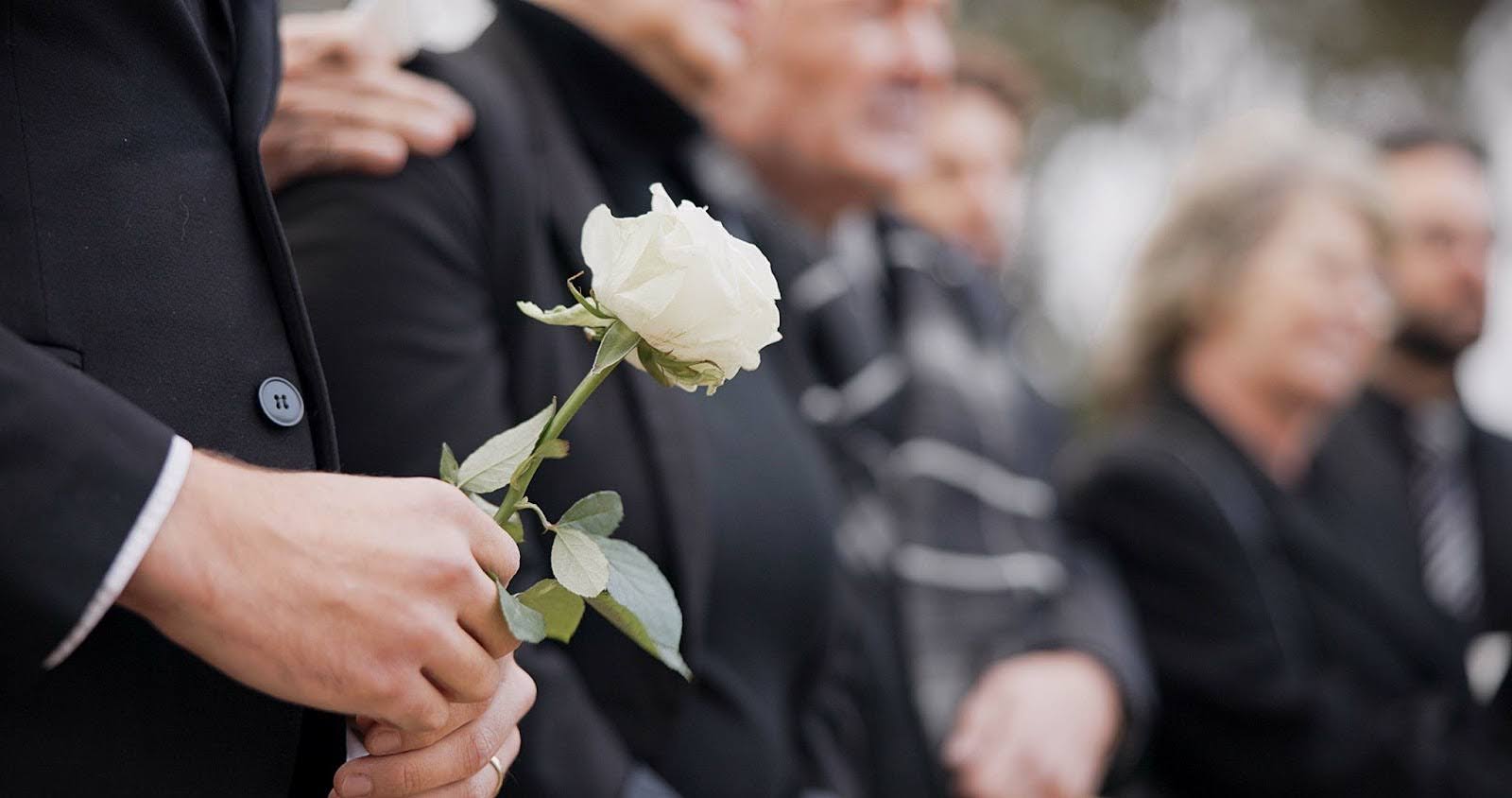What Happens at a Memorial Service?

If you’re wondering what is a memorial service, it is a heartfelt gathering that brings loved ones together to honor and celebrate the life of someone who has passed away. Unlike a traditional funeral, a memorial service is typically held after the burial or cremation, and the body of the deceased is not present. Instead, the focus is on reflecting on their life, sharing memories, and finding solace in the presence of family and friends.
The importance of memorial services cannot be understated. They provide a space for healing, closure, and community, allowing attendees to express their grief while celebrating the impact the deceased had on their lives. For many, this personalized approach to remembrance is deeply meaningful.
According to a recent FAMIC study, among those who prefer cremation, most still wish to include a memorial service as part of the process:
- 35% prefer a memorial service with photographs present.
- 27% would like a service with the cremated remains present.
- 25% would choose a traditional funeral with the body present.
This data underscores the enduring importance of rituals that honor and memorialize loved ones, regardless of the chosen method of disposition. Now that we’ve explored what memorial services are, it’s clear they remain a vital way to commemorate lives and foster connection during times of loss.
What Happens at a Memorial Service?
So, what do you do at a memorial service? These services provide a space for family and friends to gather, honor the life of a loved one, and begin the process of healing. The services are typically more flexible than traditional funerals, allowing for unique, personalized elements. Here’s an overview of what you can expect at a memorial service:
The Order of Events
A memorial service generally follows a simple, meaningful structure:
- Welcome and Opening Remarks: The service begins with an officiant, clergy member, or family representative offering a warm welcome and a few words about the purpose of the gathering.
- Sharing Memories and Tributes: Family members and friends are invited to share speeches, eulogies, or anecdotes that celebrate the deceased’s life. This can include reading poems, letters, or religious passages.
- Music or Multimedia Presentations: Songs, slideshows, or videos often highlight cherished memories, reflecting the personality and passions of the deceased.
- Closing Remarks and Acknowledgments: The service concludes with expressions of gratitude to attendees and any final words of remembrance or inspiration.
By understanding the typical order of service for a memorial, families can plan a heartfelt and meaningful event that honors their loved one’s life while fostering connection and support among attendees.
Now that we’ve explored what a memorial service consists of, let’s delve further into the details.
Personalized Touches
Memorial services are often designed to reflect the unique life and values of the deceased. Common elements include:
- Photographs and Videos: Displaying pictures or videos that capture special moments, achievements, or hobbies of the loved one.
- Personal Items: Showcasing items that held sentimental value, such as awards, artwork, or a favorite book.
- Cremated Remains or Photographs: For those who have chosen cremation, the cremated remains may be present, or a collection of photographs may take center stage.
- Cultural or Religious Rituals: Incorporating meaningful traditions or practices can add spiritual or cultural depth to the service.
Role of Memorial Services in the Grieving Process
Memorial services are a vital step in the healing journey:
- They offer a space for attendees to share their grief, find support, and celebrate a life well-lived.
- Without the presence of a body, memorial services are highly flexible, allowing families to tailor the event to their timing and preferences.
- Through shared stories and acts of remembrance, these gatherings foster connection and help loved ones begin the process of closure.
By blending structure with personalization, memorial services create a meaningful and comforting way to honor a life while supporting those left behind.
Planning a Memorial Service: Practical Steps
Determining how to plan and set up a memorial gathering involves thoughtful organization to create a meaningful event that honors your loved one. Here are some actionable steps to help guide the process:
Choose the Type of Memorial Service
Decide on the format that best suits your preferences and the memory of your loved one:
- A private family gathering offers intimacy and a more personal setting.
- A community service allows for broader participation from friends, colleagues, and acquaintances.
- A virtual event ensures accessibility for those unable to attend in person.
Select a Venue
Pick a location that feels appropriate and comfortable:
- Funeral Homes: Professional staff and facilities can provide support and guidance.
- Places of Worship: Ideal for incorporating religious or spiritual elements.
- Outdoor Settings: Parks or gardens offer a serene and natural atmosphere.
- Online Platforms: Virtual memorials via Zoom or similar platforms accommodate remote attendees.
Prepare a Checklist
Organization is key to a smooth event. Use resources like AARP’s practical steps checklist to ensure all necessary details, such as invitations, event timelines, and memorial materials, are accounted for.
Coordinate with Participants
Communicate with everyone involved in the service:
- Speakers: Share the schedule and expectations for eulogies or tributes.
- Musicians: Arrange music selections in advance.
- Officiants: Discuss the flow of the event and any specific rituals or traditions.
Consider Budget
Plan within your financial means while still creating a meaningful event:
- Explore cost-effective options like hosting a service in a public park or at home.
- Learn about funeral costs help through body donation as an alternative way to honor your loved one while reducing expenses.
Explore Alternatives to Traditional Services
For those seeking nontraditional approaches, alternative funeral arrangements may provide inspiration for a personalized and impactful memorial.
By following these steps, you can plan a heartfelt memorial service that reflects your loved one’s life and brings comfort to attendees.
Types of Memorial Services
Memorial services are deeply personal events, and families can customize them to reflect their loved one’s unique personality, values, and preferences. Below are some common types with slight elaboration:
- Traditional Memorial Service: These gatherings typically include family and friends sharing memories, tributes, and stories. Often held at a funeral home or place of worship, these services provide a structured opportunity for loved ones to come together and reflect.
- Celebration of Life: A more informal, joyful event focusing on the individual’s legacy and positive impact. These services may include music, favorite foods, or activities that celebrate the deceased’s passions and achievements.
- Religious or Faith-Based Ceremonies: These services include prayers, hymns, and rituals that align with the deceased’s spiritual beliefs. They often take place in a church, temple, or other religious setting, offering comfort to those who share the faith.
- Virtual Memorial Services: Ideal for those separated by distance, virtual services provide a way for everyone to connect and honor the deceased. These events can include live-streamed speeches, digital photo slideshows, or real-time chats for sharing memories.
Memorial Services vs. Funerals: Key Differences
While memorial services and funerals both aim to honor a loved one, their differences provide families the flexibility to choose the most appropriate option. Deciding between a funeral or memorial service often depends on factors such as:
- Timing: Memorial services can occur weeks or even months after passing, offering more time for planning or coordinating with distant relatives. Funerals, by contrast, are often held within days of death, especially when the body is present.
- Body Presence: Funerals typically involve a casket containing the body, creating a traditional opportunity for viewing or burial rites. Memorial services usually do not include the body, which allows for more flexible venues and settings.
- Customization: Another difference between a memorial and a funeral is that memorial services are inherently more adaptable, enabling families to incorporate personal touches like favorite songs, unique themes, or displays of cherished belongings. This flexibility can help create a more intimate and meaningful experience.
For those exploring nontraditional approaches, visit our guide on alternative funeral arrangements or learn about different types of funerals for more options.
How Long After Death Should a Memorial Service Be Held?
The timing of a memorial service is often guided by practical and emotional considerations, and there’s no single right answer:
- Family Availability: Organizing a date that works for key attendees is typically a top priority, particularly when loved ones are traveling from out of town.
- Location Logistics: Securing a venue that aligns with the family’s vision may take time, influencing how soon the service can occur. Outdoor or seasonal locations might also require additional planning.
- Cremation Flexibility: Cremation provides families with more freedom to schedule the service, as there is no immediate need for burial. This can ease logistical pressures and allow for thoughtful planning.
When planning, families often also wonder, how long are memorial services? The duration can vary widely depending on the format and elements included, but they typically last between 30 minutes to an hour.
There is no universal rule for timing—choosing a date that accommodates loved ones and provides space for meaningful planning ensures a heartfelt and memorable service.
Leaving a Legacy to Medical Research
Memorializing a loved one can extend beyond the service itself. Choosing our Genesis Program at MERI offers a profound way to honor their legacy by contributing to medical research and education. Through whole body donation, individuals play a vital role in advancing medical science, providing essential training for healthcare professionals, and fostering innovative breakthroughs in treatment and care.
This option includes cremation at no cost, offering families significant financial relief while alleviating the logistical challenges associated with traditional funeral arrangements. Additionally, knowing that their loved one’s contribution will make a lasting impact can provide a profound sense of closure and pride for families during a difficult time.
If you’re considering whole body donation as part of your loved one’s legacy, explore our Genesis Whole Body Donation Program and learn more about what is whole body donation. By making this compassionate choice, you can ensure that their memory lives on through a meaningful and transformative gift to medical research and education.
